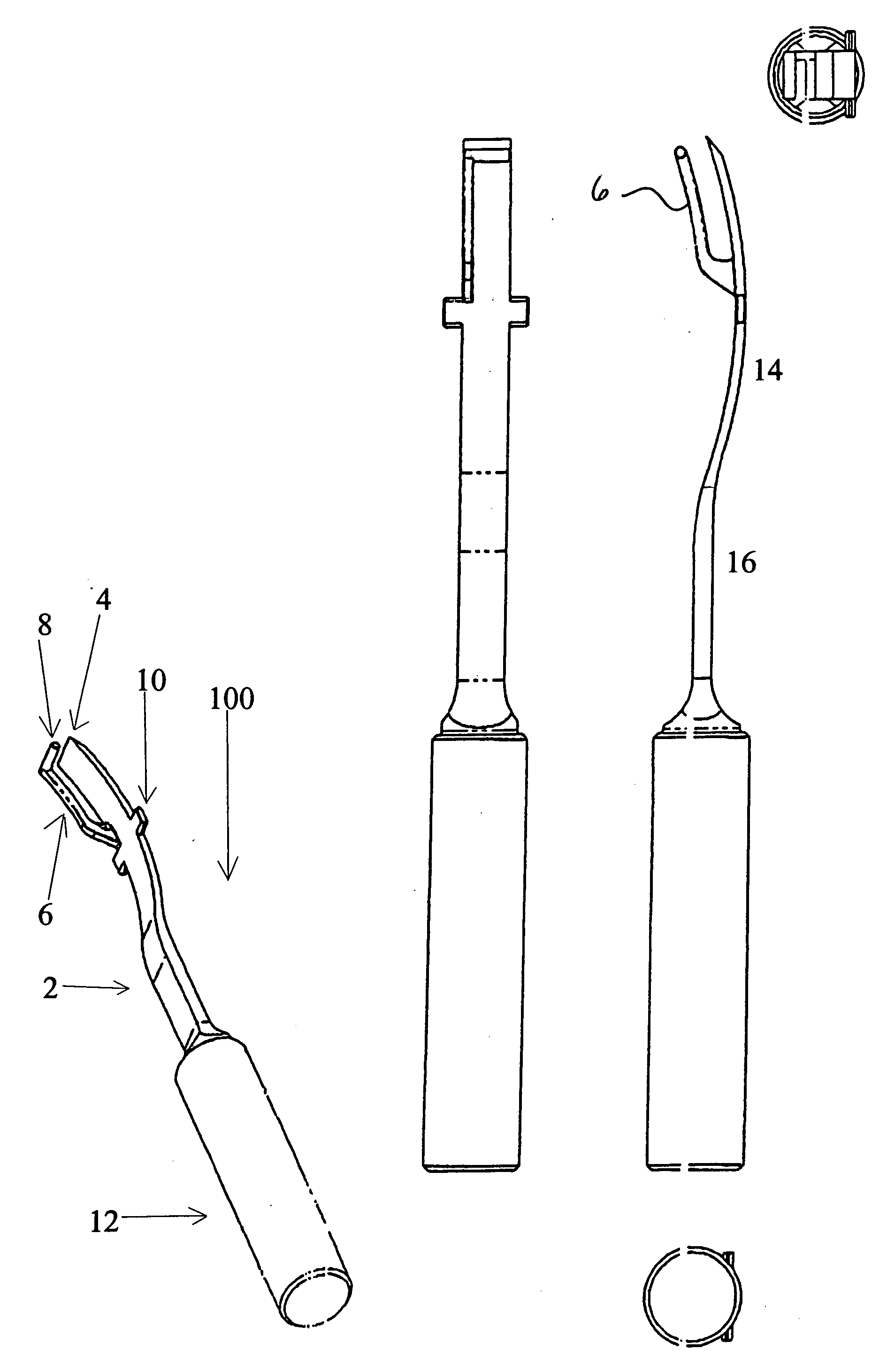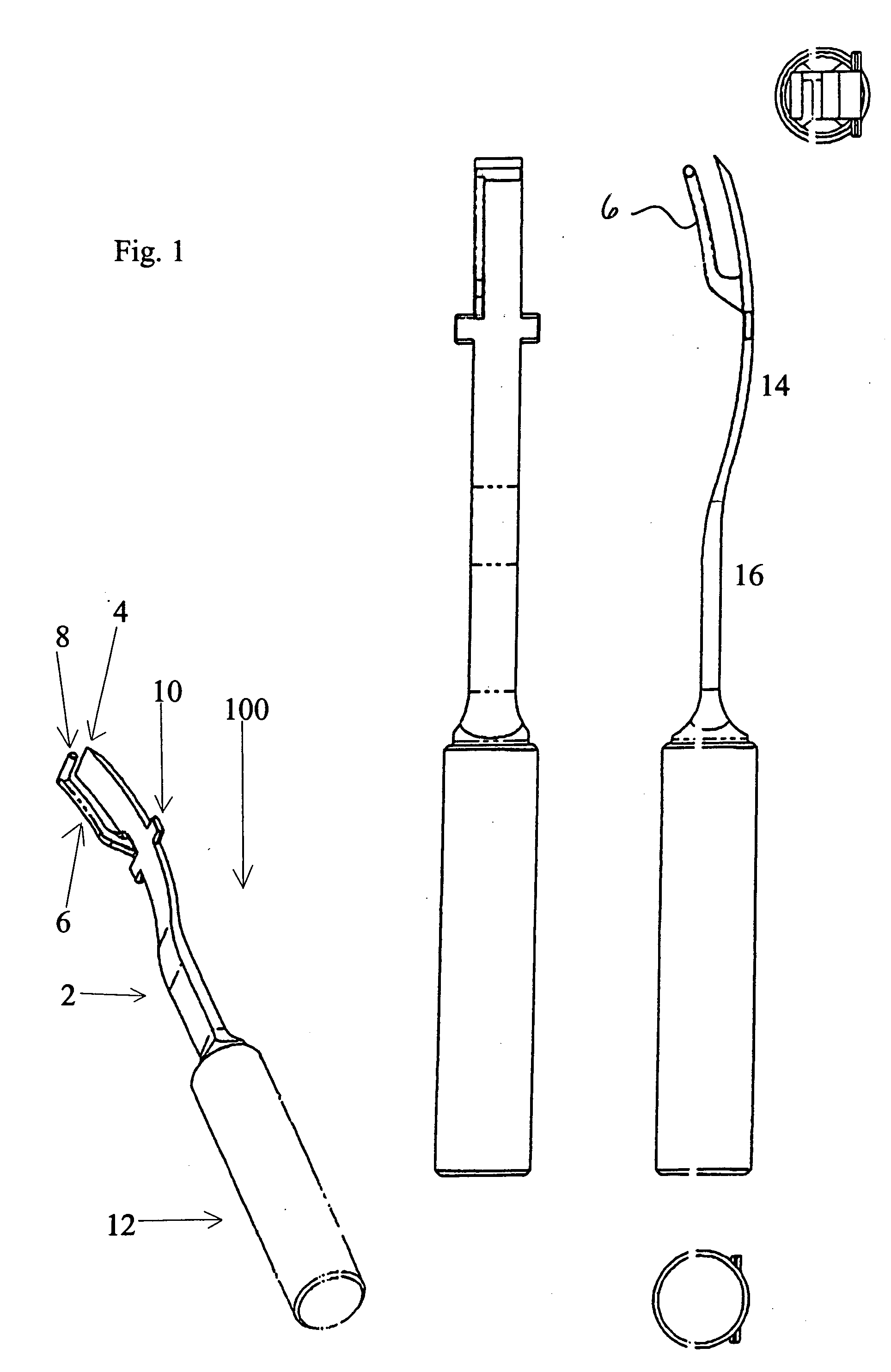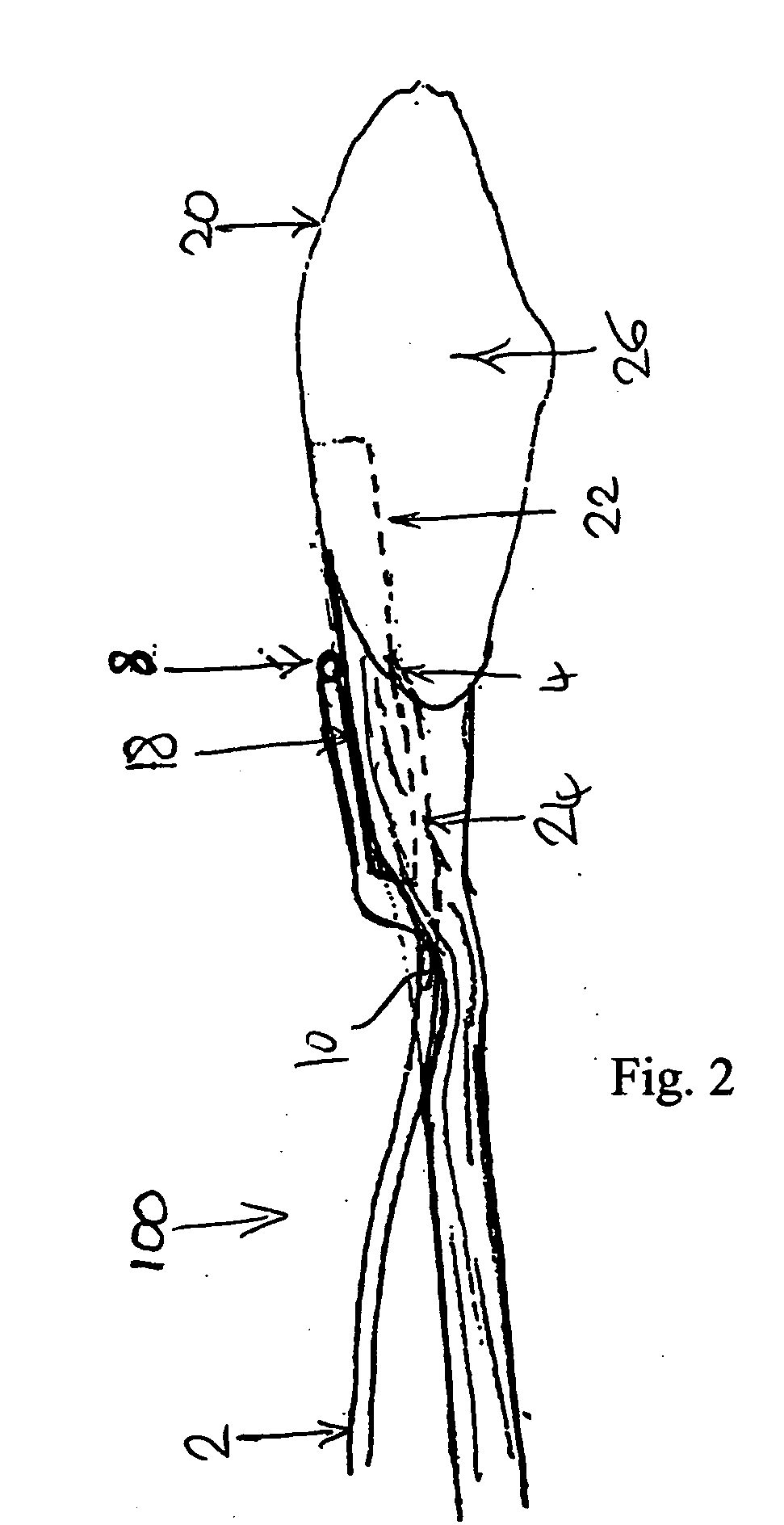Bone harvesting device and method
a bone harvesting and bone technology, applied in the field of bone harvesting devices and methods, can solve the problems of time-consuming and waste of bone stock, difficult control of the depth to which the patella bone is cut, and difficult control of the depth of the bone block, etc., to achieve the effect of convenient harvesting and more reliabl
- Summary
- Abstract
- Description
- Claims
- Application Information
AI Technical Summary
Benefits of technology
Problems solved by technology
Method used
Image
Examples
Embodiment Construction
[0031] In a preferred embodiment, described below by way of example only, there is provided a bone block harvester for use in Anterior Cruciate Ligament graft surgery using a Patellar Tendon graft.
[0032] Anterior Cruciate Ligament (ACL) reconstruction surgery involves replacing a torn ACL with a graft ligament that can be taken from the patient's own body (autologous) or made from synthetic material or from a cadaver (allograft). Of the total number of surgeries performed around 85% are performed using autologous grafts. Of this number approximately 65% are performed using a graft ligament taken from the central third of the Patellar Tendon, including bone from the superior tibia and the patella. These are referred to as Bone-Patellar Tendon-Bone (BPTB) grafts. There are several alternative grafts available for ACL reconstruction, including hamstring grafts and allografts, but the BPTB graft offers the advantage that the bone blocks heal into the surrounding bone of the patient aft...
PUM
 Login to View More
Login to View More Abstract
Description
Claims
Application Information
 Login to View More
Login to View More - R&D
- Intellectual Property
- Life Sciences
- Materials
- Tech Scout
- Unparalleled Data Quality
- Higher Quality Content
- 60% Fewer Hallucinations
Browse by: Latest US Patents, China's latest patents, Technical Efficacy Thesaurus, Application Domain, Technology Topic, Popular Technical Reports.
© 2025 PatSnap. All rights reserved.Legal|Privacy policy|Modern Slavery Act Transparency Statement|Sitemap|About US| Contact US: help@patsnap.com



